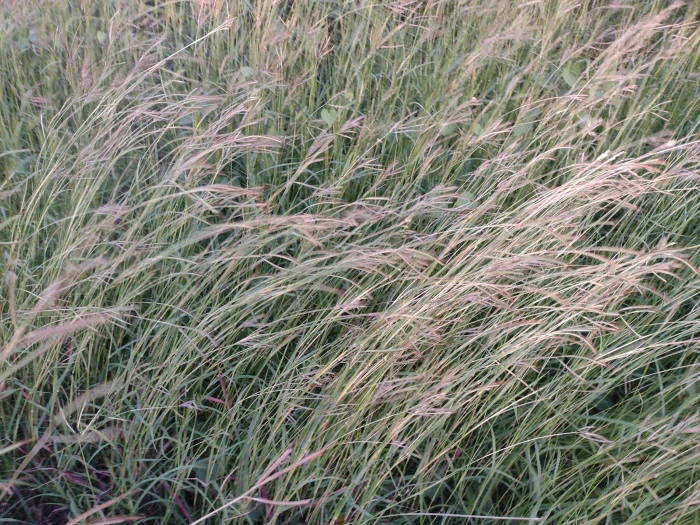Angleton Grass
(Dichanthium aristatum)
Angleton Grass (Dichanthium aristatum)
/
/

Kevin Faccenda
CC BY 4.0
Image By:
Kevin Faccenda
Recorded By:
Copyright:
CC BY 4.0
Copyright Notice:
Photo by: Kevin Faccenda | License Type: CC BY 4.0 | License URL: http://creativecommons.org/licenses/by/4.0/ | Rights Holder: Kevin Faccenda | Publisher: iNaturalist | Date Created: 2022-11-20T17:38:18-08:00 |

























Estimated Native Range
Climate Requirements for Rochester, New York
| This Plant | Your Site | Plant Suitability for Your Location | ||
|---|---|---|---|---|
| • Precipitation | 11" - 122" | 34" | You should be able to grow this plant with no additional irrigation. | Excellent |
| • High Temp. | 69°F - 102°F | 83°F | Your summer temperatures are normal for this plant. | Excellent |
| • Low Temp. | 24°F - 75°F | 17°F | Your winter temperatures may be too cold for this plant | Too cold |
This plant may not grow well at your location - your winters are too cold.
Summary
Andropogon caricosus, commonly known as Angleton grass or Yellow bluestem, is a perennial grass native to open woodlands and savannas in tropical and subtropical regions, particularly in Australia and Papua New Guinea. It is a robust, tufted grass that can reach heights of 3 to 6 feet (1 to 2 meters) with a similar spread. Angleton grass has blue-green foliage that turns a distinctive yellow or bronze in the fall, and it produces narrow, fluffy flower spikes in late summer to fall. The flowers are not particularly showy, but they add a fine-textured element to the landscape.
Angleton grass is valued for its drought tolerance and its ability to thrive in a variety of soil types, from sandy to clay, provided they are well-drained. It is commonly used for pasture and hay production due to its high forage quality for livestock. In cultivation, it requires full sun to maintain its best form and productivity. While it is not typically grown for ornamental purposes, it can be used in naturalized areas or as a tall ground cover in rural landscapes. Gardeners should be cautious, as Dichanthium aristatum (a synonym for Andropogon caricosus) is known to be potentially invasive in some regions outside its native range, particularly in the southern United States, where it can outcompete native vegetation.CC BY-SA 4.0
Angleton grass is valued for its drought tolerance and its ability to thrive in a variety of soil types, from sandy to clay, provided they are well-drained. It is commonly used for pasture and hay production due to its high forage quality for livestock. In cultivation, it requires full sun to maintain its best form and productivity. While it is not typically grown for ornamental purposes, it can be used in naturalized areas or as a tall ground cover in rural landscapes. Gardeners should be cautious, as Dichanthium aristatum (a synonym for Andropogon caricosus) is known to be potentially invasive in some regions outside its native range, particularly in the southern United States, where it can outcompete native vegetation.CC BY-SA 4.0
Plant Description
- Plant Type: Grass
- Height: 2-3 feet
- Width: 1-2 feet
- Growth Rate: Moderate, Rapid
- Flower Color: N/A
- Flowering Season: Spring
- Leaf Retention: Deciduous
Growth Requirements
- Sun: Full Sun, Part Shade
- Water: Medium
- Drainage: Fast, Medium, Slow
Common Uses
Erosion Control, Low Maintenance
Natural Habitat
Native to open woodlands and savannas in tropical and subtropical regions, particularly in Australia and Papua New Guinea
Other Names
Common Names: Angleton Grass, Kleberg Bluestem, Awned Dichanthium, Bluestem, Mao Geng Shuang Hua Cao
Scientific Names: Dichanthium aristatum, Andropogon aristatus, Andropogon caricosus subsp. mollicomus, Andropogon caricosus var. glabrior, Andropogon caricosus var. heteropogonoides, Andropogon caricosus var. mollicomus, Andropogon incurvatus, Andropogon incurvatus, Andropogon koenigii
GBIF Accepted Name: Dichanthium aristatum